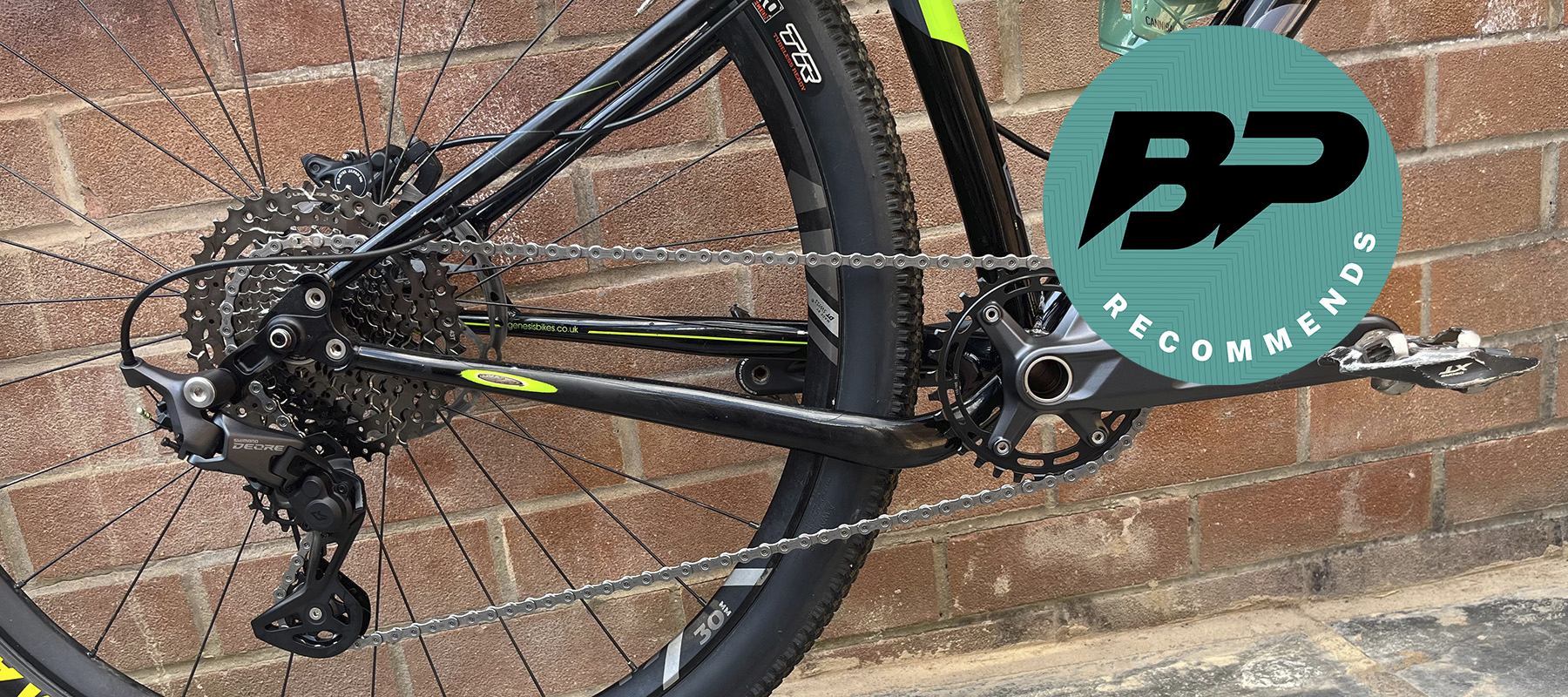Bike Perfect Verdict
It is a perfect setup for distance or high-volume winter riders who don't need a huge gear range, but better derailleur options are available for technical trail use.
Pros
- +
Bombproof
- +
Smooth shifts even under load
- +
High mileage claims seem to ring true
- +
Plenty of options
- +
Fit and forget reliability
Cons
- -
The shifter lever has a lot of travel
- -
Lacks super-low gear ratios
Why trust BikePerfect
Shimano introduced its Linkglide technology back in 2021, but this is the first set I've had the chance to use. They have redesigned the original Hyperglide + gears with revised sprockets and chain profiles that are claimed to improve longevity by a whopping 300 percent. It's meant to deal with the extra torque exerted by the best electric mountain bikes, but its smooth shifts and longevity claims are perfect for non-motorized riders, too.
The prospect of a drivetrain that can survive not just one but many UK winters is great and, honestly, a refreshing change from the latest super-fancy highly-strung groupsets. This is a setup for the high-mileage riders out there who get out rain or shine, week in week out, and want a no-fuss, dependable set of gears… So how did it stack up?
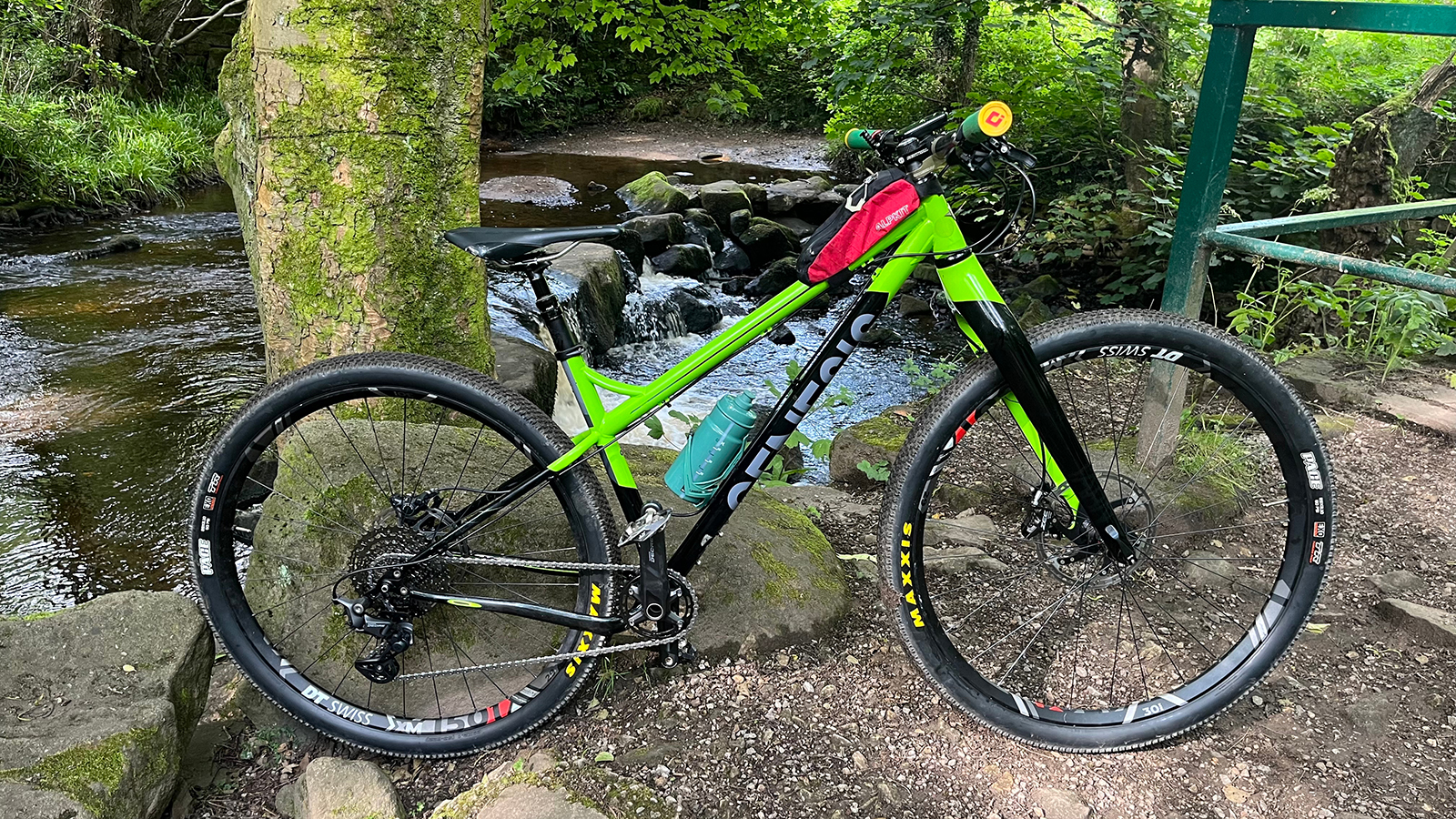
Chainset
Let's start with the central piece of the groupset, the M5100-FC chainset. It's available in a wide range of options, including double and triple chainring versions, which is good news for those with older bikes that want to replace a drivetrain, as well as the single ring 30 tooth ringed version I've had on test here. I had the 175mm versions fitted, though a 170mm version is available, but that's your only option, which bucks the current trend for shorter cranks like 165 or 160mm. Deore level chainrings are only offered in 30 or 32 teeth, although other rings from higher up in the range will fit if you want to go up to 34 or 36t.
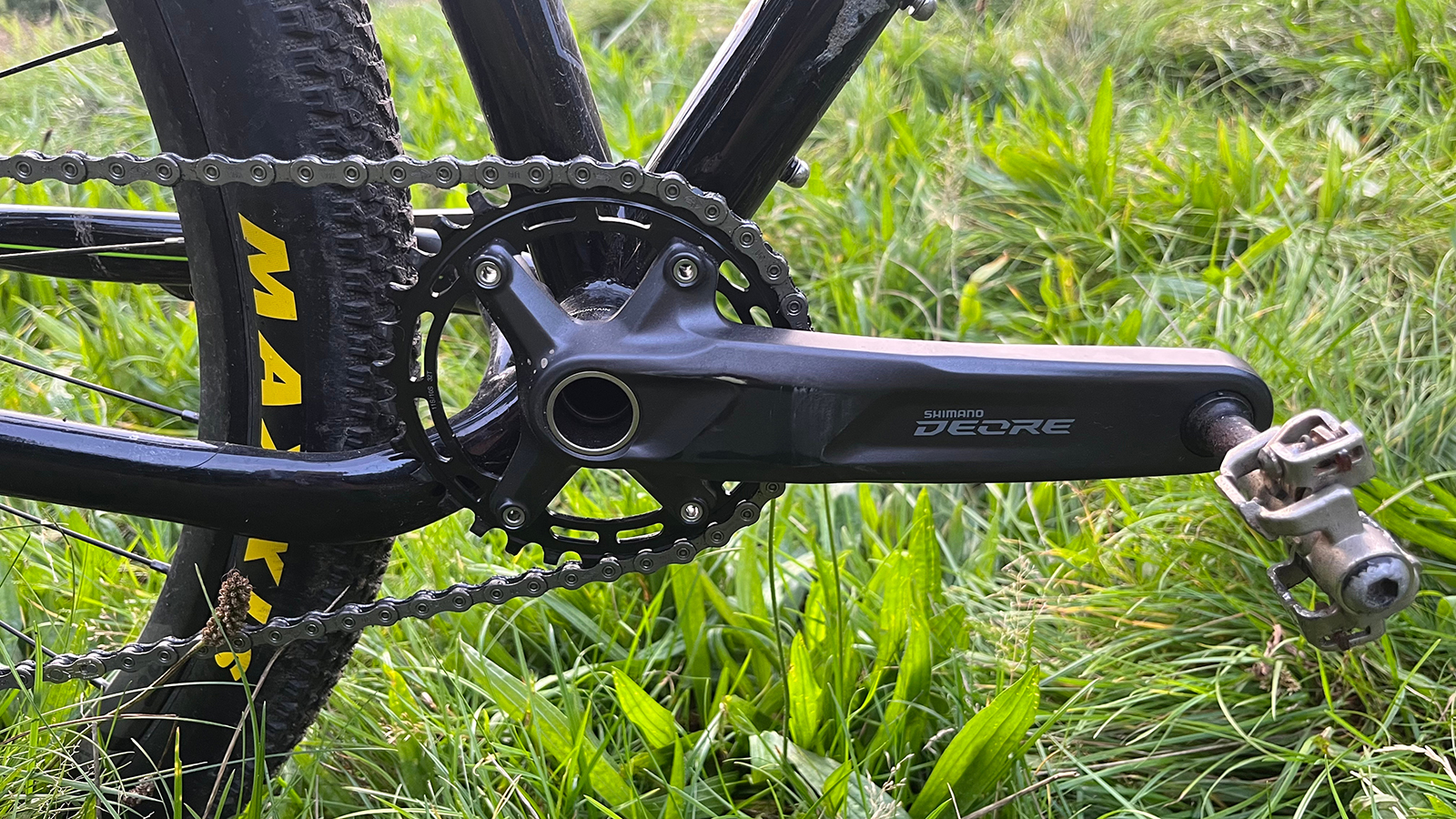
Shimano only spec a 52mm chain line in this particular crank, so it only really works with 142mm and 148mm boost back ends. Anything wider will need something different. The forged arms are well finished with the logo neatly hidden so that they won't look as tatty quite so quickly, which is a nice touch. They run on the standard Hollowtech 2 24mm axle standard, so you have an almost endless selection of bottom bracket options open to you. I used a standard threaded BSA bottom bracket, which was easy to fit and performed flawlessly throughout testing.
Shifter
The Deore SL M5130 shifter has an almost retro look and feel to it. It's a long way from the likes of AXS and the latest Di12 offerings, but for me, it was far from a negative thing. In fact, it was more like meeting an old friend. There is something about a smooth functioning cable gear shifter, with its mechanical feel, that I love. It uses Shimano's well-known two-way release lever setup, with the thumb paddle at the bottom for downshifts (or shifting to a larger cog and easier gear) and the top paddle operable with either the thumb in a similar fashion to SRAM cable shifters or with your forefinger for upshifts. Unlike other e-MTB certified shifters, you can double-shift on the down change, which makes for quicker panic shifts when you need a lower gear.
The paddles lack any change in texture, unlike versions higher up in the range, which may hamper wet weather performance, but it didn't affect me too much during testing.
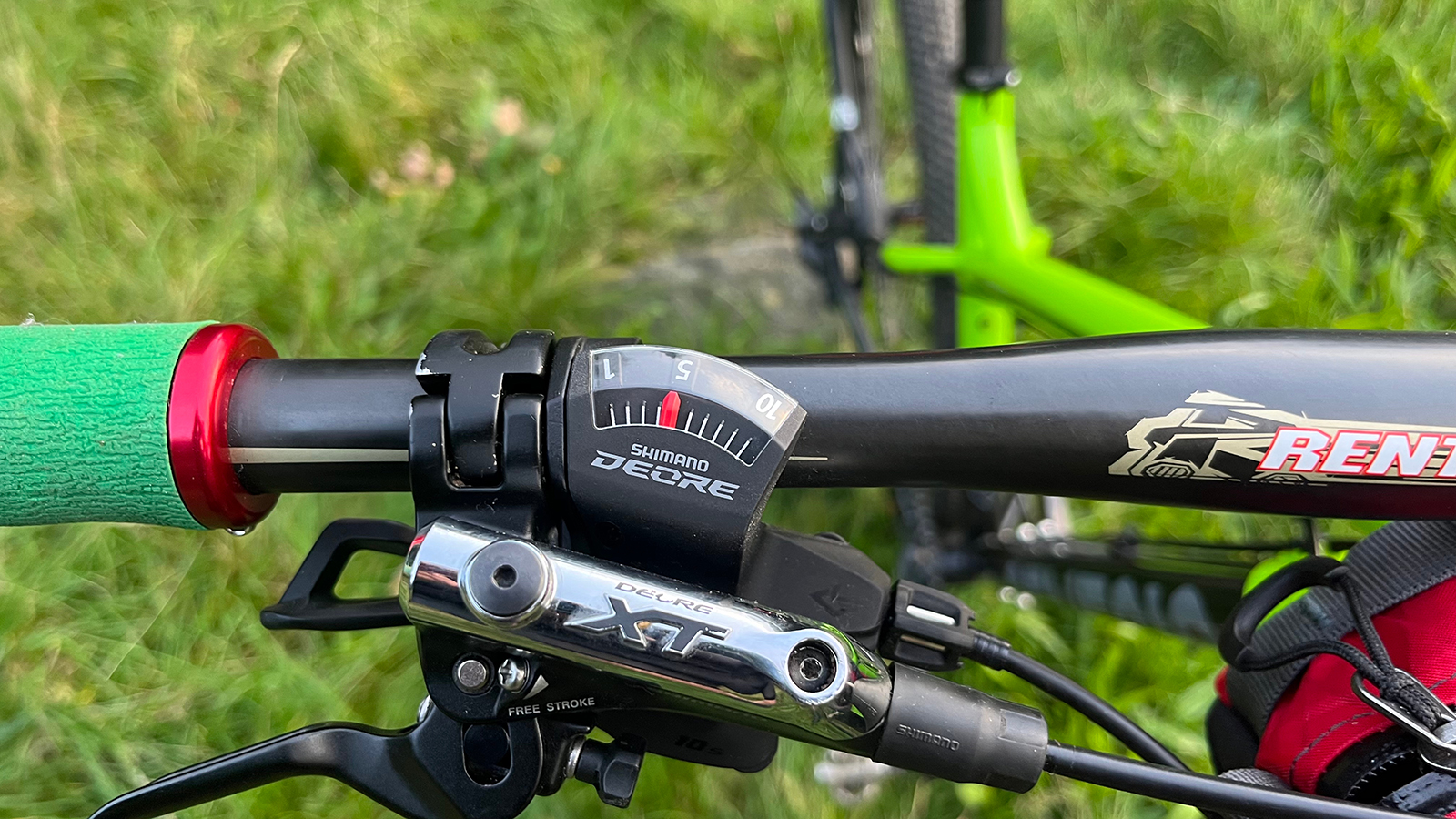
There's no I-Spec or integrated clamp confusion here either, just a simple band-on design that will work with any setup you have. There is even a gear window up top to show what gear you are in, to complete the retro vibe.
It comes supplied with their Optislick inner gear cable and the venerable SP41 outer cable, which means shifts are smooth with no drag in the cable or in the lever feel. My only criticism is the amount of travel on the thumb lever feels excessive when compared to other models in the range and mutes the precise shifting feeling you get with an SLX or XT setup; but you soon get used to it, and at this price point, it is perfectly acceptable.
Derailleur
The RD-M5130 derailleur is a Linkglide-specific model that only works with the matching chain and cassette. It has a Shadow Plus clutch to keep your chain tension on a single ring setup and has a low profile design with an optimized slant angle, and both work together to keep your mech as far away from trail objects as possible.
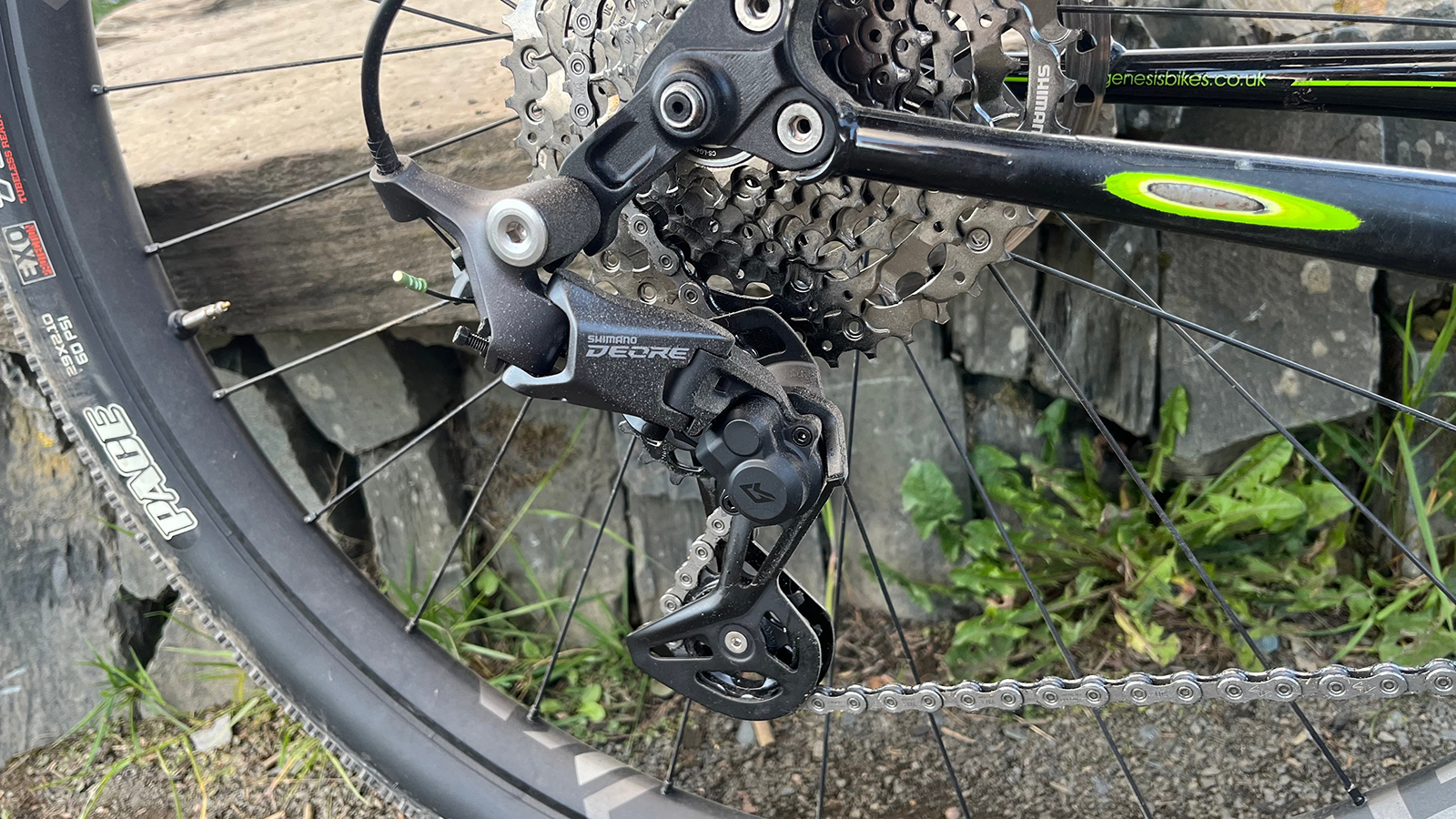
Shimano derailleurs have two springs, unlike SRAM, which only have a spring in the main body. This version has a softer pivot spring combined with large 13-tooth pulley wheels, which don't offer the same chain retention power and tension as the more expensive 12-speed versions, but it does result in a quieter, smoother ride.
It has a capacity of 32 teeth, which means it can operate from an 11t sprocket up to 43t, which, compared to a 12-speed setup or Shimano's cheaper Cues rear derailleur, is a bit low. Although with only ten sprockets on offer, the smaller range ensures there are fewer gaps between the gearing, so it's easier to maintain your cadence on climbs and offers you a more usable gear spread on flatter and rolling terrain.
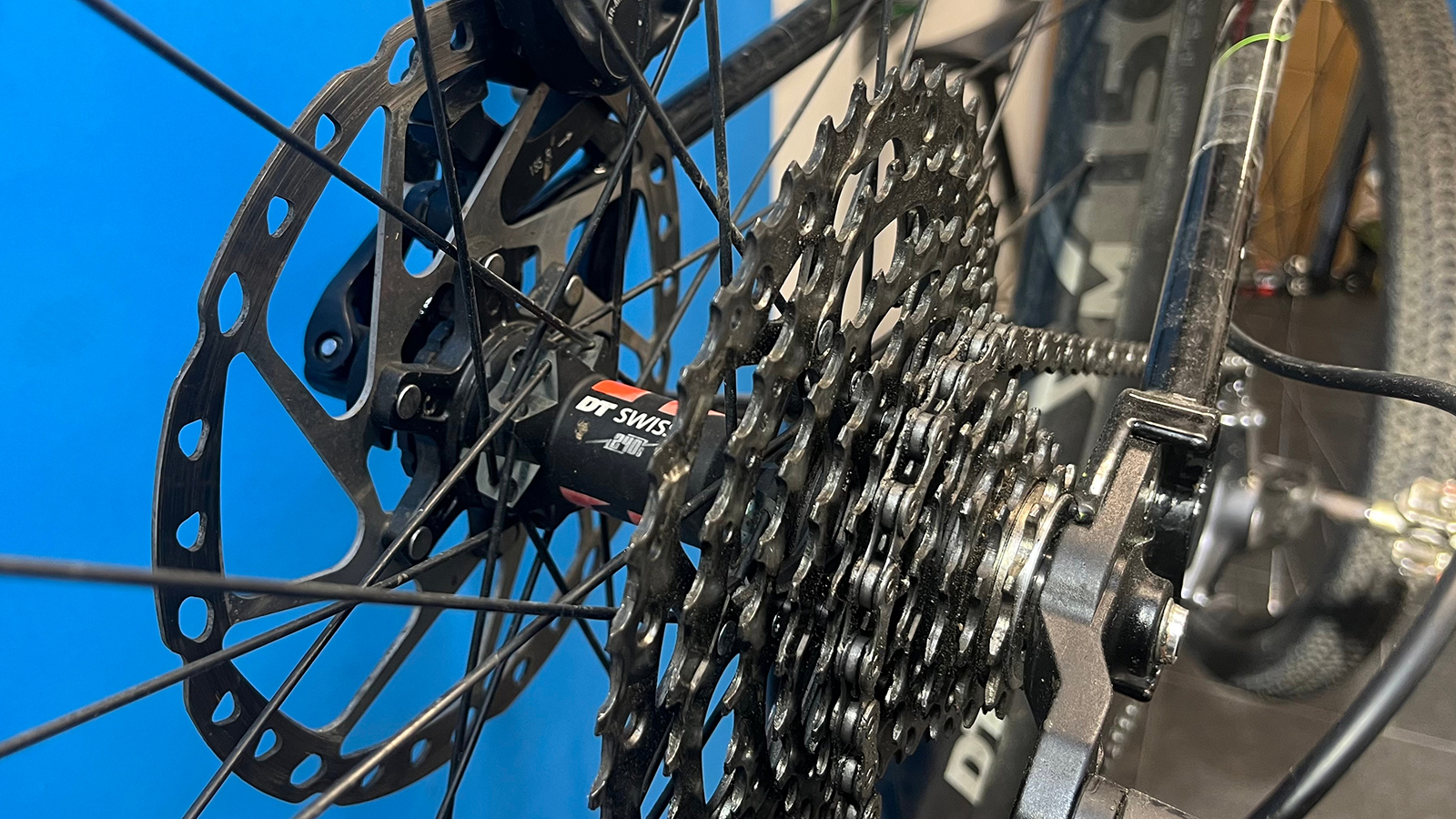
Cassette
Linkglide's cassettes are designed to be extremely durable, with a slightly slower shift than a standard setup, which is all in the name of longevity. Shifting under load, especially on an e-MTB, kills a normal drivetrain in record time, and this is Shimano’s solution.
The main difference is the change in shape and profile of the teeth, which is why a different chain is required. They are much thicker at the base and have a unique chamfer, which, when combined with a reduction in shift gates from the usual three to two, gives you a marginally slower shift but a cassette that will last up to 300 percent longer, according to Shimano. In case you wondered, a shift gate is where the chain is designed to move up or down the gears. You can see these fairly easily as they usually use narrower teeth and follow a line across the cassette from sprocket to sprocket.
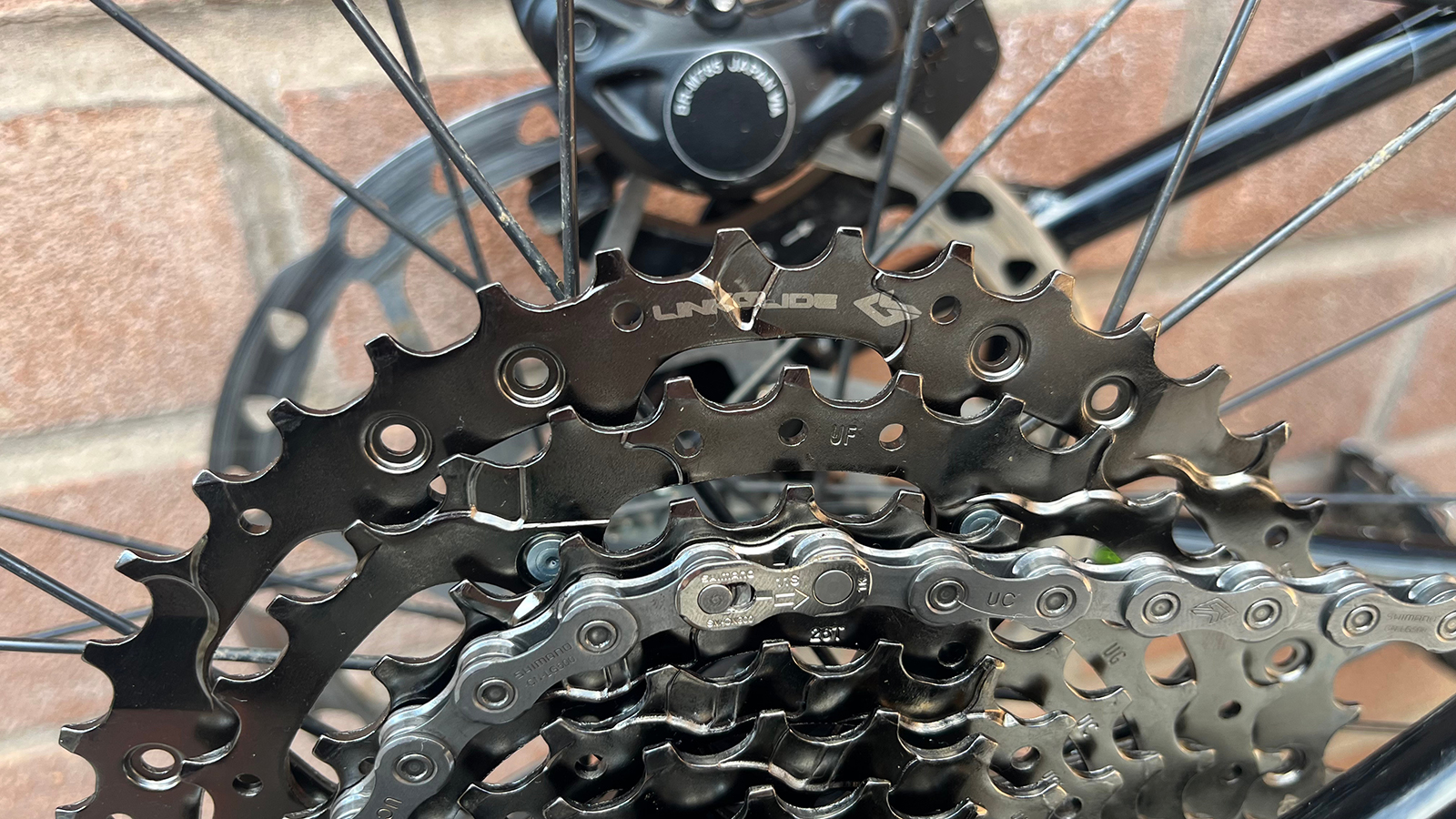
The cassette is shared with the lower-priced Cues groupsets and has a cool-looking dark grey, almost polished finish. I had the 11-43 version, though the 11-39 and 11-48 versions are also available in the 10-speed variant.
Chain
The CN-LG500 chain is a 10- and 11-speed compatible variant designed to work with the revised cassette profile of the Linkglide cassette. I always prefer to use the same brand of chain and cassette as I find they shift smoother and tend to last longer as they are designed to work together. This version is e-MTB rated, has a split link, and has worked perfectly.
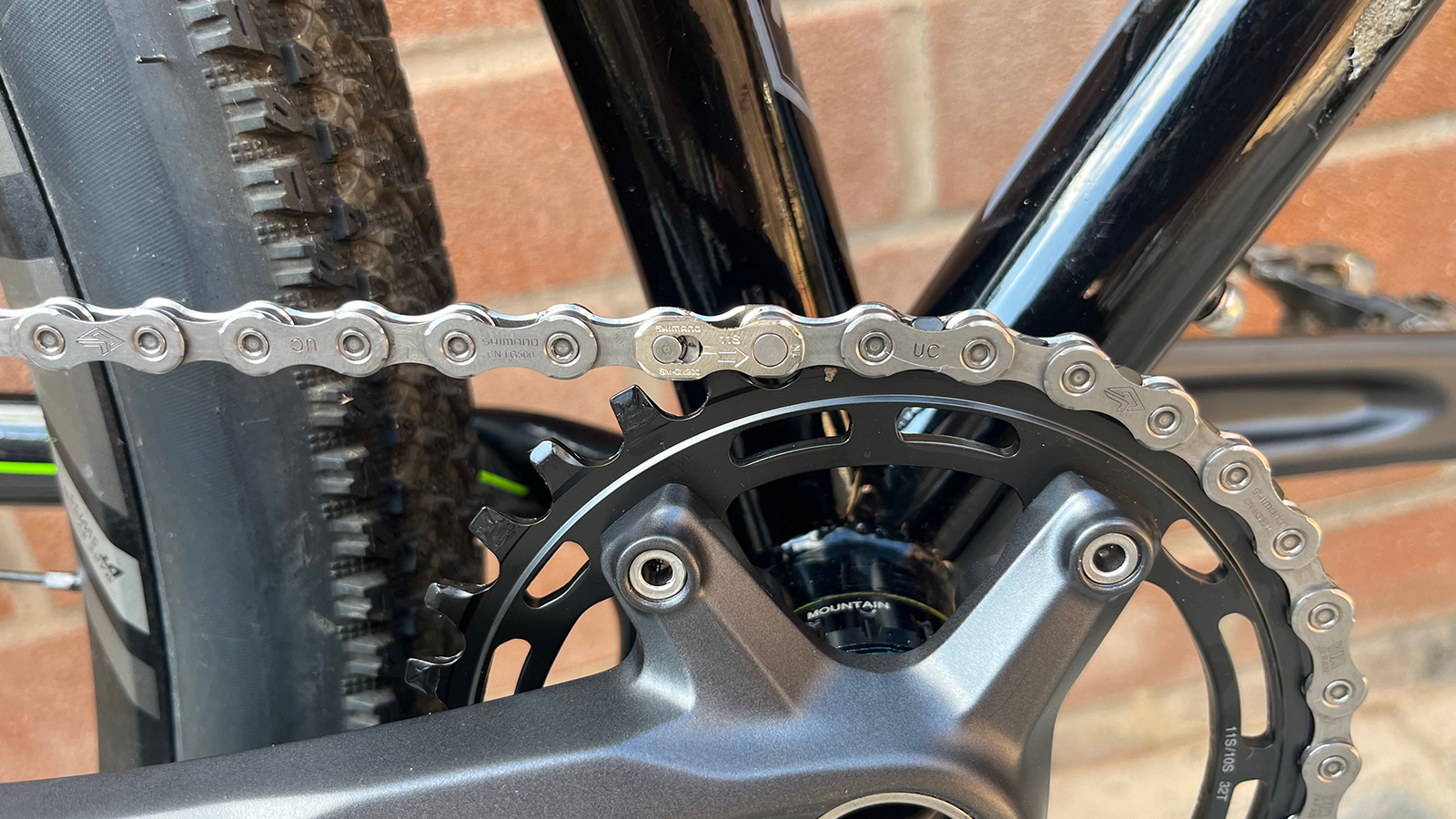
Verdict
In a world of ever more disposable products, it's great to see something that's designed to last. The Linkglide tech makes sense and seems to hold true to Shimano’s longevity claims, with barely any wear on the cassette or chainring after several months of riding.
The chainset isn't the lightest but is solid and dependable, and the almost standard 24mm axle means it fits most bikes with 142mm or boost back ends. The standard threaded bottom bracket I used was easy to fit and has remained creak-free, with bearings as smooth as the day I fitted them.
Shifting is as smooth as ever from Shimano, and as nice as electric gear shifts are, I still love the mechanical feel of a traditional cable setup. Although the shifter has more lever travel than I'd like, and the lack of texture on the paddle may be an issue for some, it's a minor issue at such a budget-friendly price point.
My biggest criticism of the Deore setup is the lack of available range with the rear derailleur, I personally would opt for the Cues equivalent, that costs slightly more but gives you up to a 48-tooth maximum sprocket which would give you a far more trail-friendly spread of gears, albeit with bigger gaps between gears.
Overall, it's an excellent drivetrain, and it is refreshing to see something designed for long-term use on both e-MTB and pure bikes alike. In this format, though, I think it suits those who ride on flatter terrain or big gear pushers who won't miss the ultra-low gears.
Tech specs: Shimano Deore Linkglide groupset
- Cranks: 869g (175mm x 30T), $70.99 / £69.99 / €69.29
- Shifter: 147g (with cable), $31.83 / £34.99 / €26.88
- Derailleur: 360g, $54.99 / £49.99 / €67.82
- Cassette: 583g (10-51T), $N/A / £59.99 / €64.99
- Chain: 254g, $31 / £29.99 / €30.20

Neal has been riding bikes of all persuasions for over 20 years and has had a go at racing most of them to a pretty average level across the board. From town center criteriums to the Megavalanche and pretty much everything in between. Neal has worked in the bicycle industry his entire working life, from starting out as a Saturday lad at the local bike shop to working for global brands in a variety of roles; he has built an in-depth knowledge and love of all things tech. Based in Sheffield, UK, he can be found riding the incredible local trails on a wide variety of bikes whenever he can
